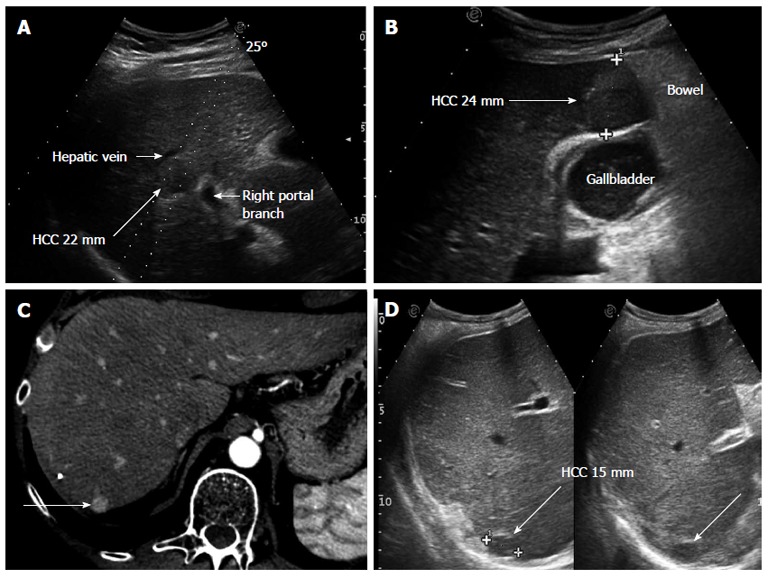Figure 1.

Clinical cases in which performing hepatic resection or radiofrequency ablation had to be decided. A: Small hepatocellular carcinoma (HCC), 22 mm in diameter, located centrally in the right liver lobe in a patient with MELD 10 and clinical signs of portal hypertension. Surgery would have required a right hepatectomy, thus, radiofrequency ablation was preferred even if a reduced rate of complete necrosis could be expected due to the possible heat sink effect of the nearby large vessels; B: The tumor is located sub-capsular, close to the bowel loops and in strict contact with the gallbladder, implying various technical contraindications to percutaneous ablation. Open surgery was the strategy adopted; C: The tumor (long arrow), shown in the arterial phase of contrast enhancement at computed tomography scan, is located sub-capsular at the liver dome; D: Ultrasonography confirms the tumor (long arrow) to lie very deep and without a safe needle track; in fact, these images are taken in deep inspiration, the lesion being hardly visible during normal breathing. The location was considered to contraindicate percutaneous ablation and surgery was performed.
